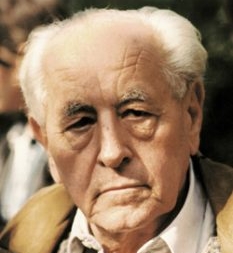Laszlo Levendel
He trained as a doctor from childhood. He enrolled in university in 1944, after surviving labor service, the Bor concentration camp, and the “forced march.” He was a founding member and later director of the Apáthy István Medical People's College in Szeged.
From 1952 until his death, he worked as a pulmonologist at the National Korányi Tuberculosis and Pulmonology Institute. He sought to cure and resocialize not only the diseased part of the body, but also the whole person. In his department, he treated all strata of society, including asthmatics, alcoholics, the most vulnerable with multiple disabilities, and those from the poorest strata.
He treated not only “professionally” and with modern medicines, but also in such a way that the patient was an active participant in his own recovery, so that he would recover and become a more mature and responsible personality. These and similar questions led him to the psychosomatic perspective, even when it was still forbidden, and to the medical practice and socio-political convictions that he called multidimensional. In the early 1970s, he created the “L Pavilion” for the treatment of alcoholic lung patients; this was the first alcohol ward in socialist Hungary where forced therapy was not used. He was concerned about what would happen to the patients who had recovered and wanted to recover when they left the hospital. He launched the national “Támasz” care network.
In addition to hundreds of medical publications and books, he also published botanical, sociological, psychological, and artistic writings.
In the early 1960s, he created an innovative Electroclassifier, which was also new in the then emerging medical cybernetics, together with István Fenyő and the Hungarian Academy of Sciences' Mathematical Research Institute, capable of solving complex diagnostic and classification tasks. The medical intention behind the creation of the device was to make it possible to accurately diagnose tuberculosis in every clinic throughout the country - even where there was no lung specialist with specialized professional knowledge. The difficulty was that it was necessary to determine the so-called sub- or decompensation degree of the disease (i.e. the degree of damage caused by the disease). Based on the detailed clinical examinations, a total of 703,265 possible results were possible. László Levendel developed an evaluation method based on his decades of practice, on which mathematician István Fenyő designed an analog logic target computer. The machine was built from step switches, relays and indicator lights, the size of a (then) radio set, in a desktop design. (Unfortunately, not a single copy has survived – editor's note.)
- selected publications
- obituary
- Devil's Chariot – conversation with Dr. László Levendel (video, 2016.)
- Levendel100 – Healing a Country (Commemorative Event)
- Exhibition from the Levendel Collection (video, 2018)
- László Levendel, István Fenyő: Electroclassifier, an aid for solving complex diagnostic and classification tasks
- László Kalmár: Application of digital calculators and special purpose machines in medical diagnostics
- He was a man of diverse interests and broad in his activities. He participated in the Petőfi Circle meetings of 1956 as a doctor seeking possibilities for healing the entire country, as well as in the opposition movements of the last decade. He was present at the Monor, Lakitelek, and Belgrade quayside conferences. For years he initiated and organized political discussions in his own apartment.
- The literary and ecological journal Liget, which he founded, was the first Hungarian independent (non-state), licensed periodical. The first issue was published in 1986, in which he “diagnosed” the most serious ills of society in his comprehensive analysis entitled The Healing of a Country. This issue was immediately crushed and the journal was banned. In 1988, the same (expanded) first issue was published as the first product of the free press after the party conference preparing for the change of regime.
Created: 2020.12.18. 10:31
Last modified: 2024.06.07. 23:43

